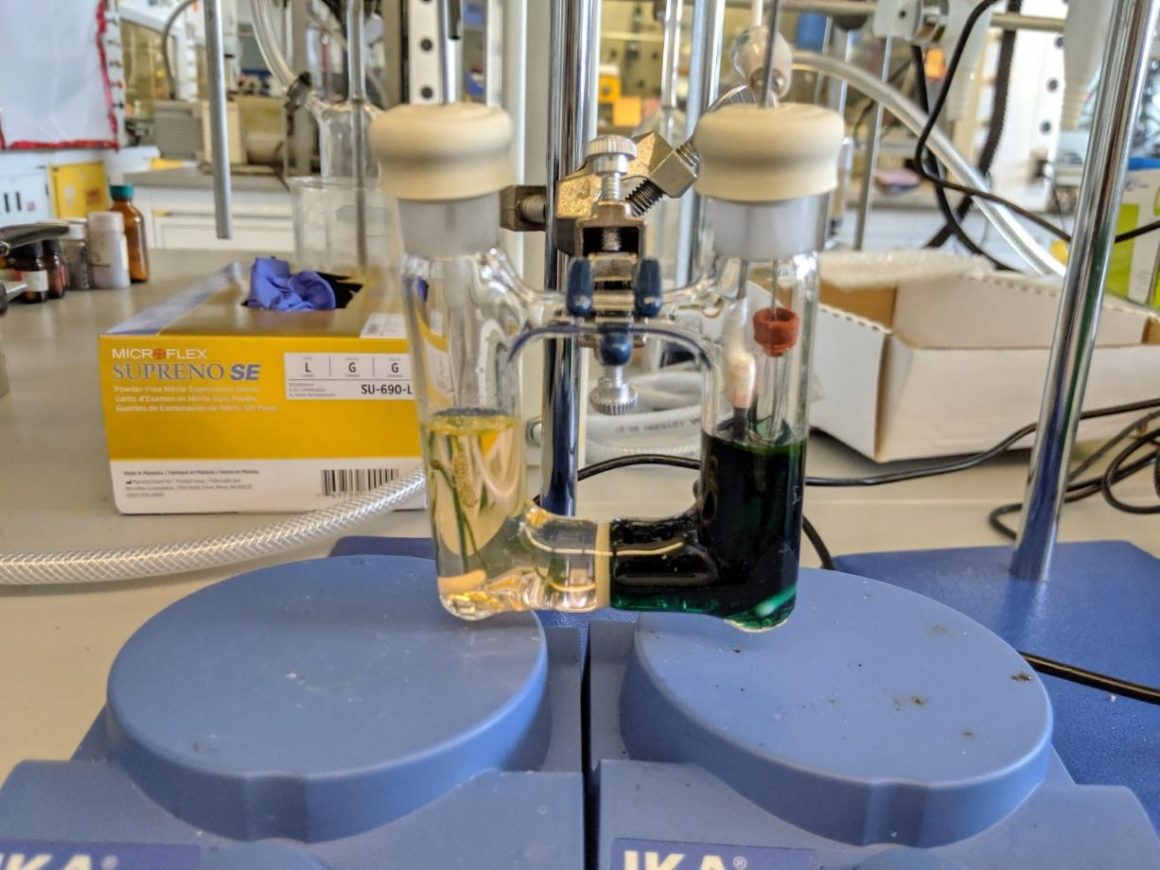
Renewable electrosynthesis: Closing the carbon loop
By Rachneet Randhawa, November 22 2021—
A student-led international project has developed a new chemical pathway to turn carbon dioxide into useful products. The idea is to more efficiently convert greenhouse gas to fuels and chemicals — a process also known as closing the carbon loop. The Gauntlet sat down with a Ph.D. candidate in the Welch lab at the University of Calgary, Josh Koenig, to learn more.
Koenig’s research focuses on the design and development of new catalysts for carbon dioxide conversion. Closing the carbon loop can be described as taking the emissions from the combustion of fossil fuels, for example, and capturing this CO2, performing a conversion type of experiment harnessing this CO2 electrochemically or photochemically. The carbon dioxide is converted back into some sort of a chemical feedstock, or fuel, at which point it can be stored and used as an alternative type of fuel —basically, the same way you would treat fossil fuels to be stored and used for energy purposes. However, the concepts of closing the carbon loop and carbon capture are two related but different ideas. Carbon Capture focuses on the actual removal of CO2 from the atmosphere whereas Closing the Carbon Loop in CO2 conversion is taking the captured CO2 from the atmosphere and chemically converting it into a different molecule.
As for the overall process for the experiment, Koenig’s research focuses on a specific catalyst called rhenium bipyridine, which is a classic organometallic complex. The researchers attached an organic chromophore, known as an emulated perylene diamide, to this. This attachment resulted in an electron reservoir for the catalyst akin to batteries, like a local source of electrons for the catalyst. And in doing so, the conventional rhenium bipyridine complex was enabled to access a different reaction pathway to convert CO2 into carbon monoxide. The best part is that this new pathway can be done at lower applied voltages, which means energy saving overall for the system.
When attempting to enable the electron reservoir, Koenig attached the chromophore onto the catalyst in the hopes that it would work as a photocatalyst rather than an electric catalyst. But ironically during his observations and testing, he discovered a really interesting electrochemical property in which the stored electrons on it were accessible to the catalyst and enabled the different reaction pathways.
Koenig also spoke about the collaboration with other researchers, one of whom was Zack Dobrowski who also works in the Pierce lab at the University of Calgary.
“His lab focuses more on organic metallic chemistry and how to isolate different intermediates of a catalytic cycle,” said Koenig. “So I was able to supply him with some of my catalysts. And he would mimic what is happening electrochemically by using different chemical reagents and trap these and help us characterize what we can see happening during our electrochemical experiments and just confirm what we think is happening isn’t happening.”
His other collaborator, Dr. Keethan Rao, a Ph.D. student in chemistry at the University of Kentucky, helped Koenig construct a computational model.
“I had a proposed mechanism as to how I thought this would go. And he was able to confirm these things, using a computational technique called Density Functional theory,” said Koenig.
Koenig claims that the CO2 conversion team at the University of Calgary is brand new and was less than a year old when he joined.
“So there isn’t really a lot of background within the two different research groups here — the Pierce lab and the Welch lab — on how to do these things. So almost everything has kind of been self-taught. It’s been a lot of trial and error,” said Koenig.
Some further readings on carbon research Koenig recommends are Phil de Luna’s paper “What would it take for renewably powered electro synthesis to displace petrochemical processes,” which explain how CO2 conversion can be competitive with existing technologies. Further research can potentially lead to large-scale CO2 conversion performance at an industry level and radically change the way pollution is mitigated in the atmosphere.
